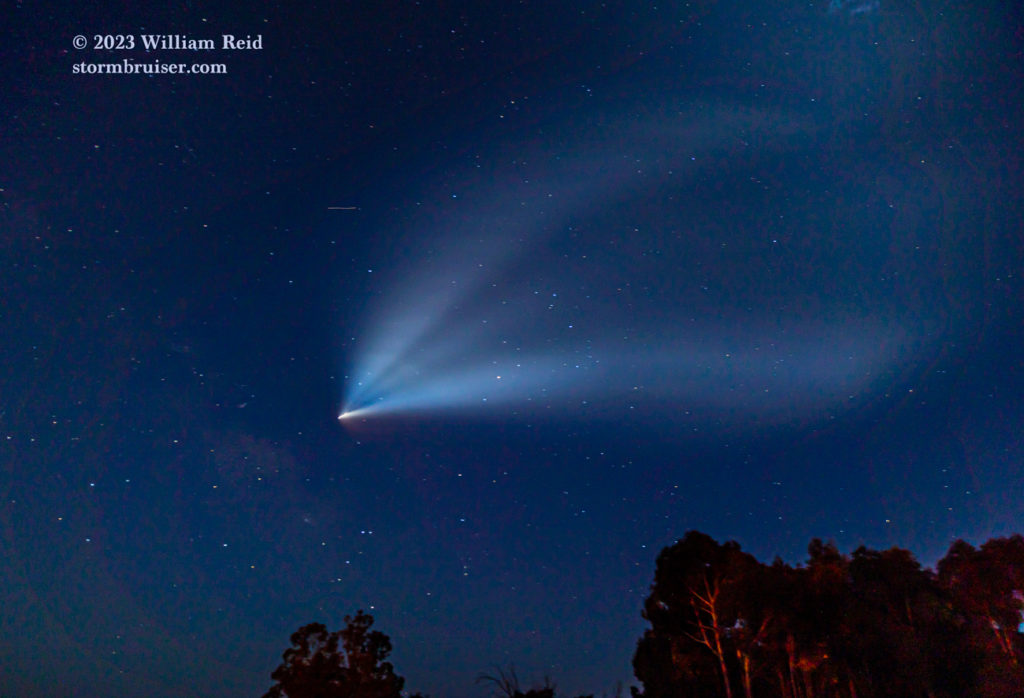
I work part-time at Vandenberg Space Force Base now (VBG). I prefer to call it Vandenberg AFB (Air Force Base). Elon Musk’s Space X project uses VBG to launch a lot of their satellites, sometimes 3-5 launches per month. Most of these seem to be during the daytime. The daytime ones are fun to observe, but it is the nighttime launches that are really spectacular.
My shift at VBG ended at 8 p.m. on this Wednesday, and a launch was scheduled for 9:09 p.m. (This was a re-schedule of a launch that was scrubbed 24 hours earlier. I had found a nice and dark spot near Lompoc to photograph that one, but the launch was aborted a few seconds prior to launch time.) The low clouds and fog had moved over the base again, so I had an hour to find a good spot with a decent view that wasn’t cloudy. I was headed home this evening, so I continued beyond cloudy Lompoc to Highway 1. I took that eastward towards U.S. 101 and the Gaviota area, and broke out of the low clouds about 5 miles from the 101. The road was close to hills on the south side, and I needed a decent horizon to the west and south, so I continued to the 101. I had dilly-dallied some in Lompoc, though, so now I only had about 12 minutes to launch time. I knew of a good spot or two along the 101 near Gaviota that would work nicely. The spots that I had in mind were near the coast right along the 101, but first I had to get through this canyon north of Gaviota. And, wouldn’t you know…I came up to road construction, just one lane open, and slow traffic headed southbound! I was going 20 mph and the launch was under 10 minutes away, and here I was in a narrow canyon and trapped by large semi trucks. This was terrible!
Well, the traffic was bad for a few minutes and then thankfully loosened up as both lanes became available. I made it to the coast and exited at Mariposa Reina. There were a bunch of annoying tall trees here, and I had to make a quick decision on where to set up for the photography shoot! The best spot was right on the bridge over the 101. Fortunately, the area was free from traffic, except for the occasional vehicle cruising by under me on the main highway.
I quickly got the tripods set up with about two minutes to spare. The bright rocket then made its appearance a little north of due west, behind some trees that were north of the highway. I had the camcorder on this, and then tried some shots at 200mm with the 70-200mm lens. The rocket was moving exceptionally fast and was practically moving directly overhead here. I could not monitor the camcorder AND hope to get any quality stills, so the video part of this adventure was done. The rocket and its blue and orange “flame” were spectacular above me…and I was struggling to get shots. The camera with the long lens was on a tripod, and I couldn’t get shots overhead! Anyway, I missed about a minute or two as I struggled with that.
The rocket moved off to my south and the long white-blue “cloud” behind the rocket was becoming more prominent. I took a bunch more shots with the long lens and some additional ones with the 21mm wide-angle lens. Plenty of these shots were under-exposed or blurry due to camera shake. That’s right, I was learning on-the-fly and barely getting any quality shots. What should my shutter speed and ISO settings be for a bright rocket and a dim vapor cloud?!
There was just a little daylight remaining, but stars in the dark skies above the ocean to the south were easily seen. The rocket passed right in front of Scorpius. All of this happened in about four minutes time.
All too soon the rocket dimmed considerably and the show was pretty much over. I saw a bright orange blob close to the horizon to the south a minute or two later, and this was the booster rocket (or whatever it is that comes back to earth!) returning to land on a barge just offshore.
If you are interested, here is a link to my images of a similar launch, but taken from San Nicolas Island!
The images below were with the long lens.
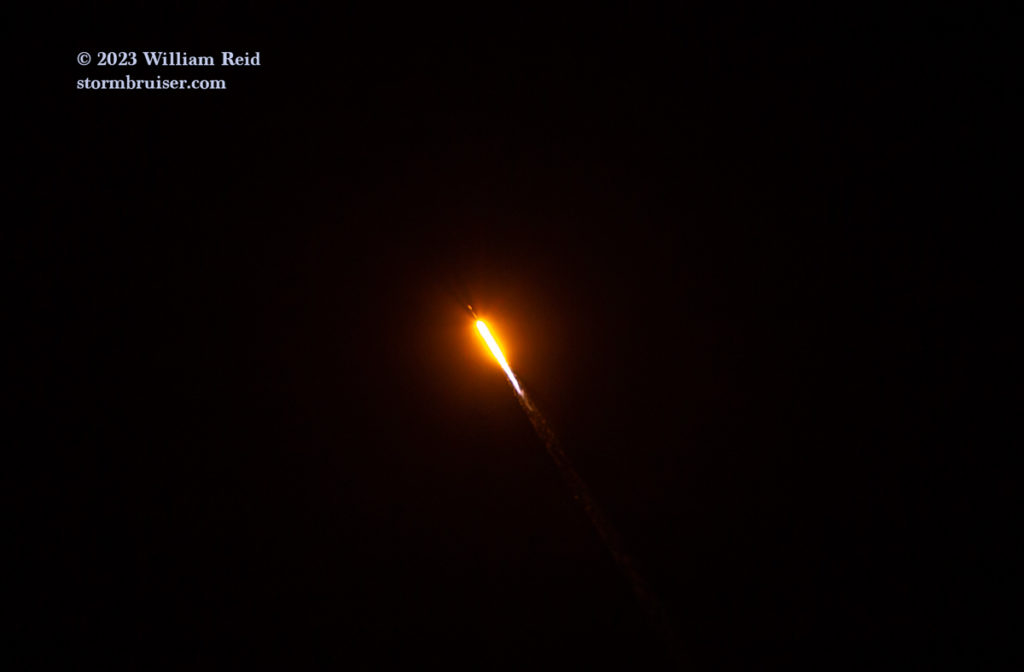
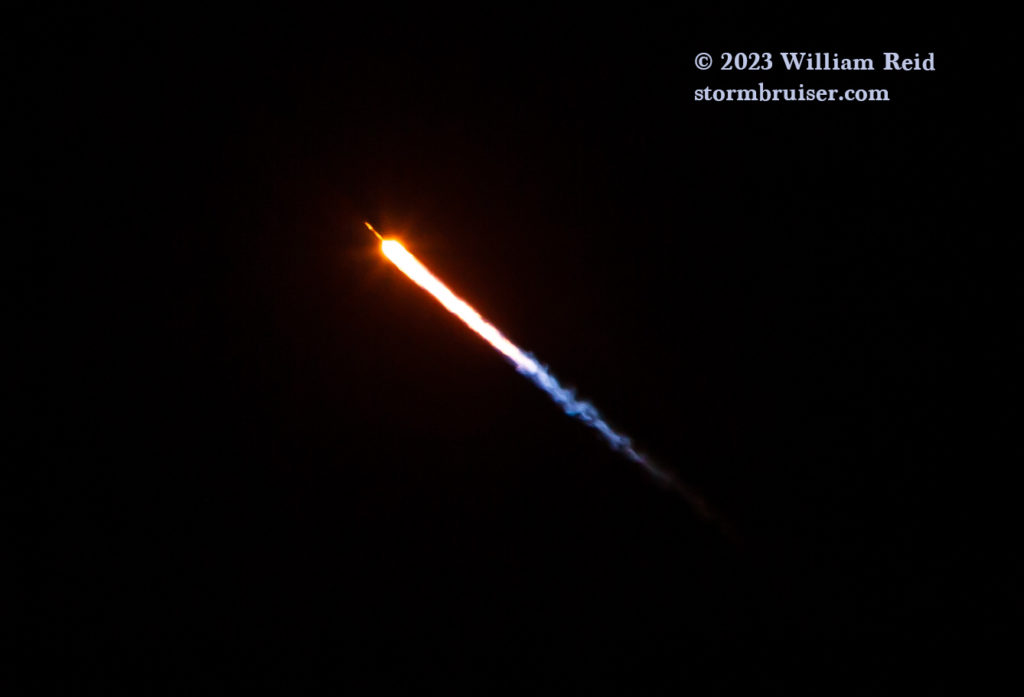
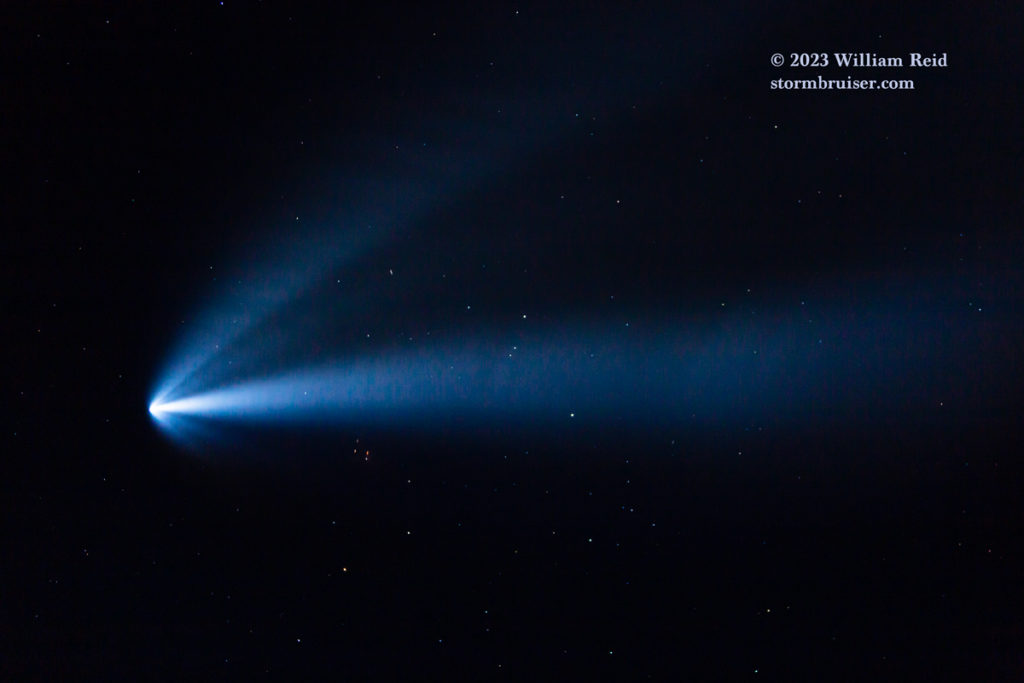
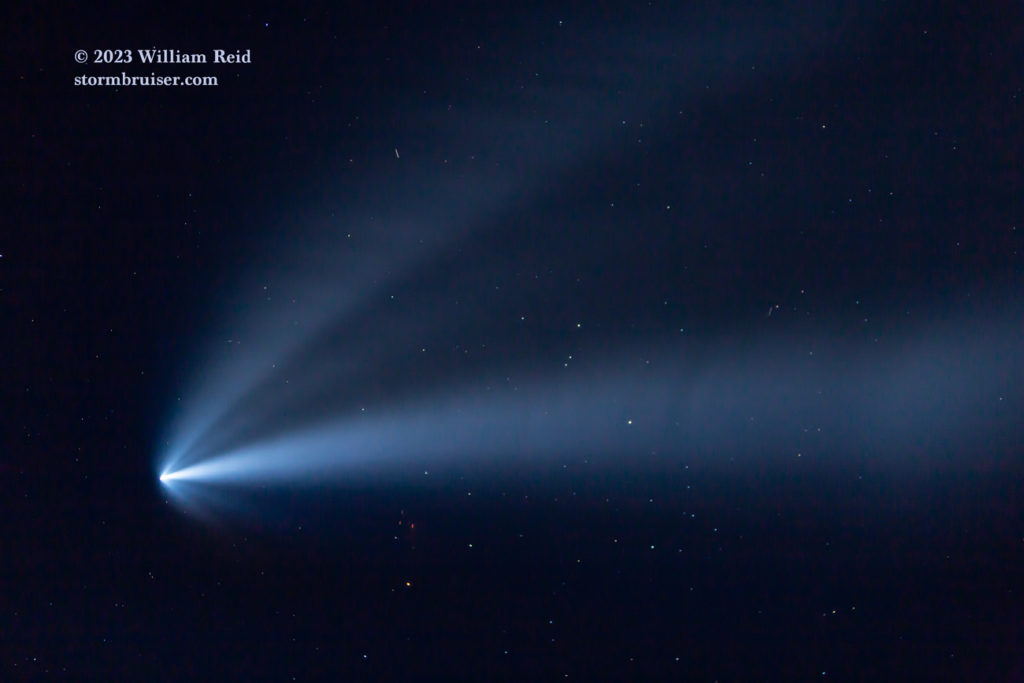
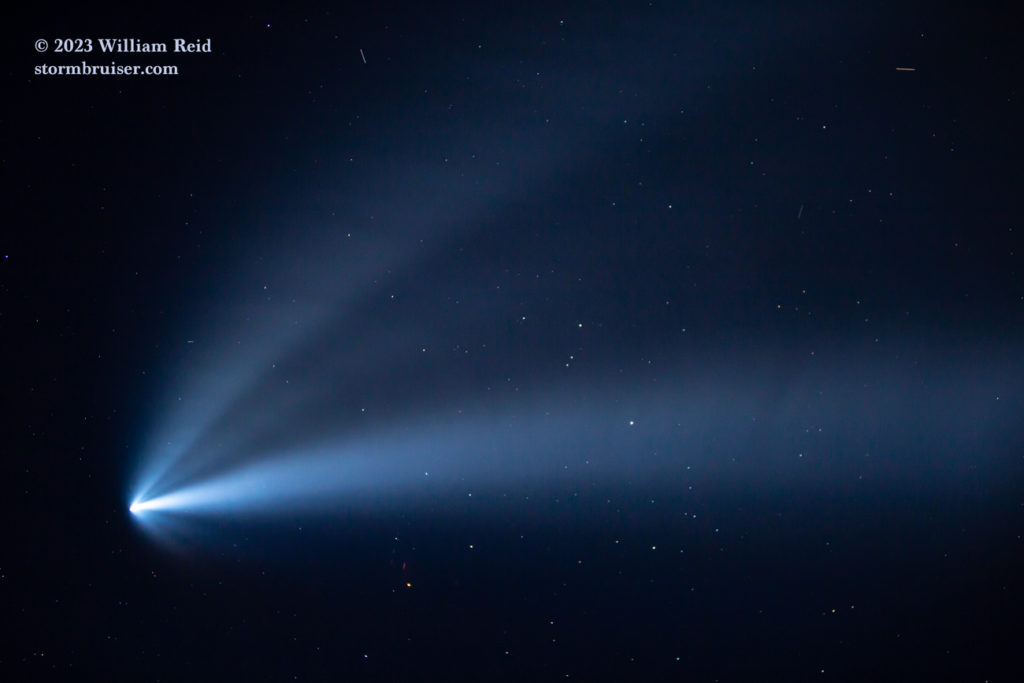
And these images were with the 21mm lens.
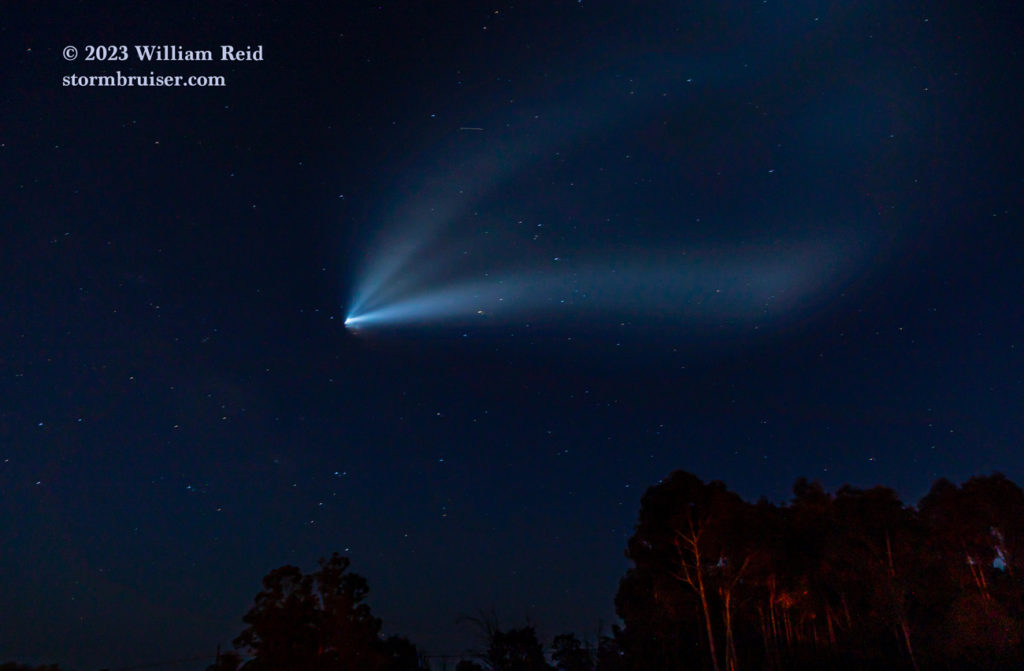

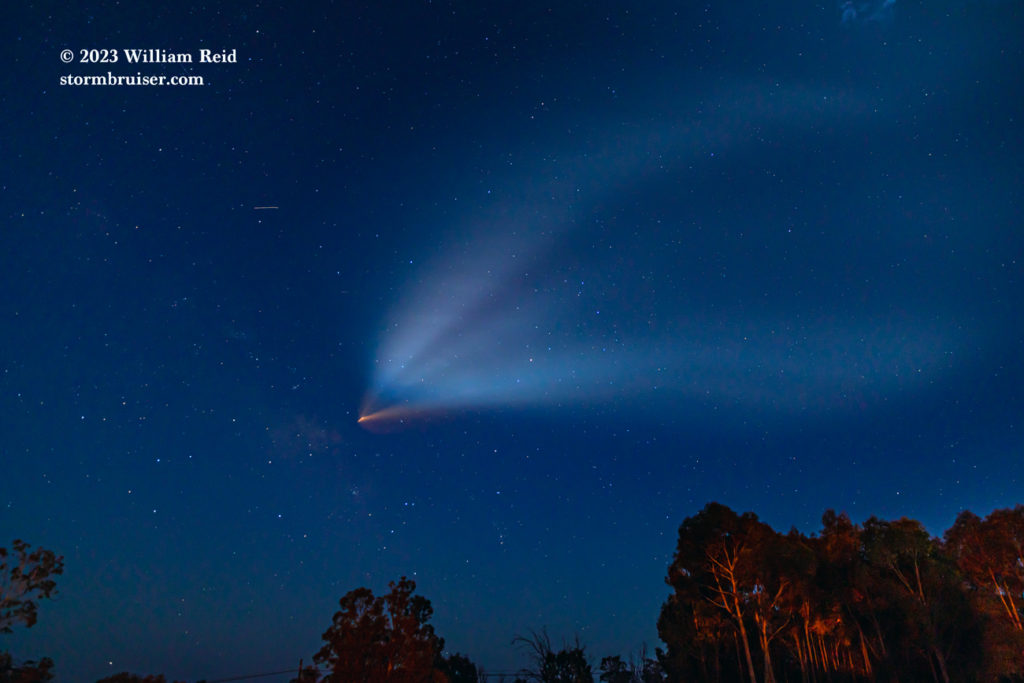
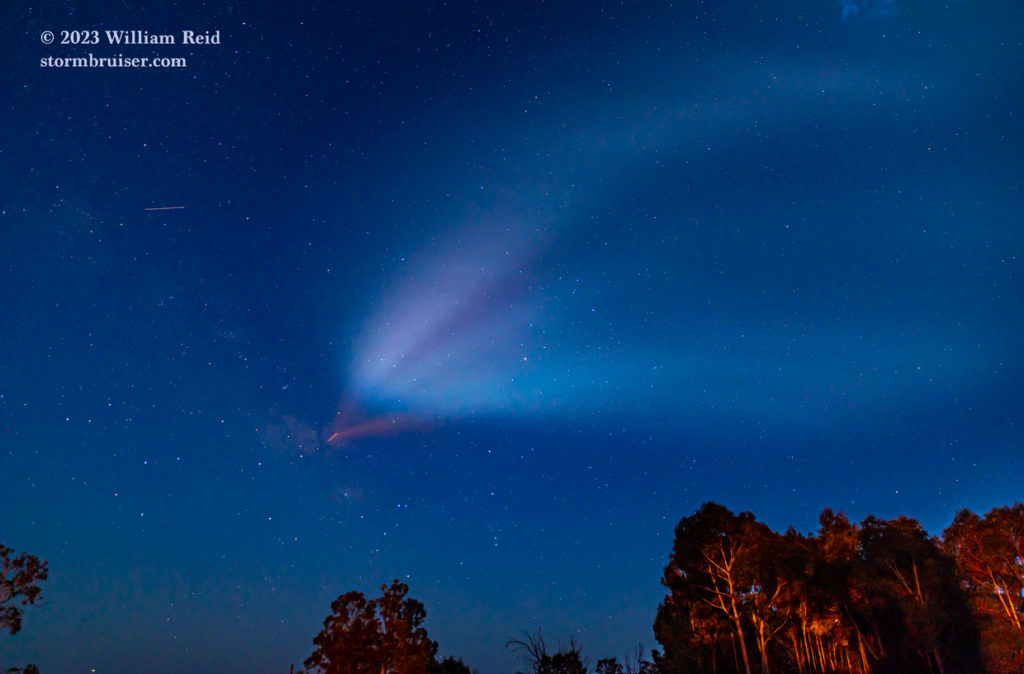
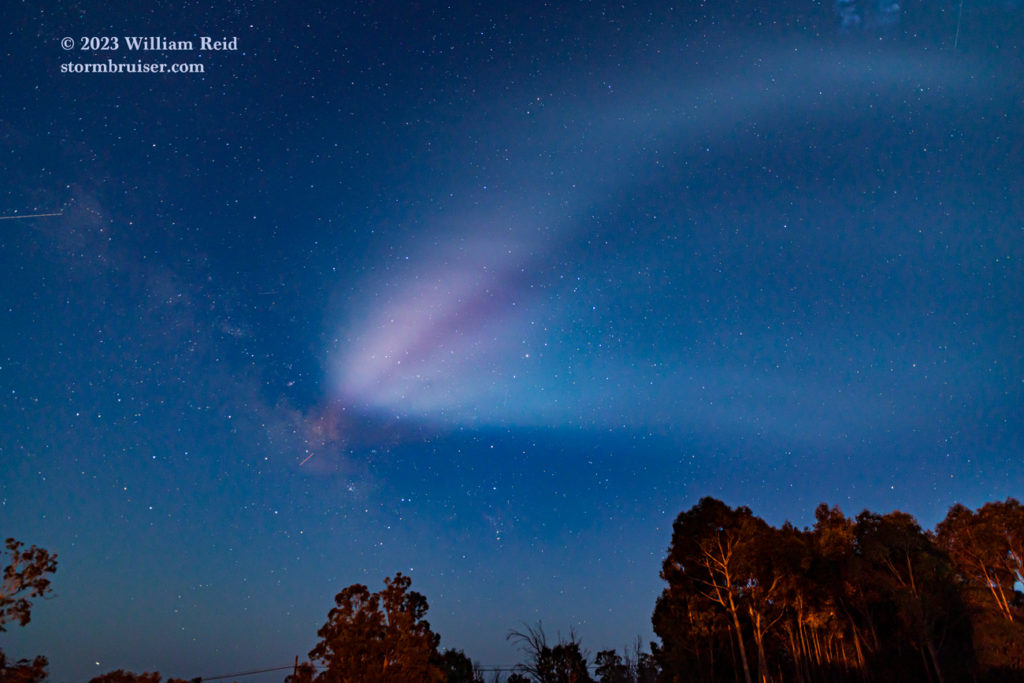
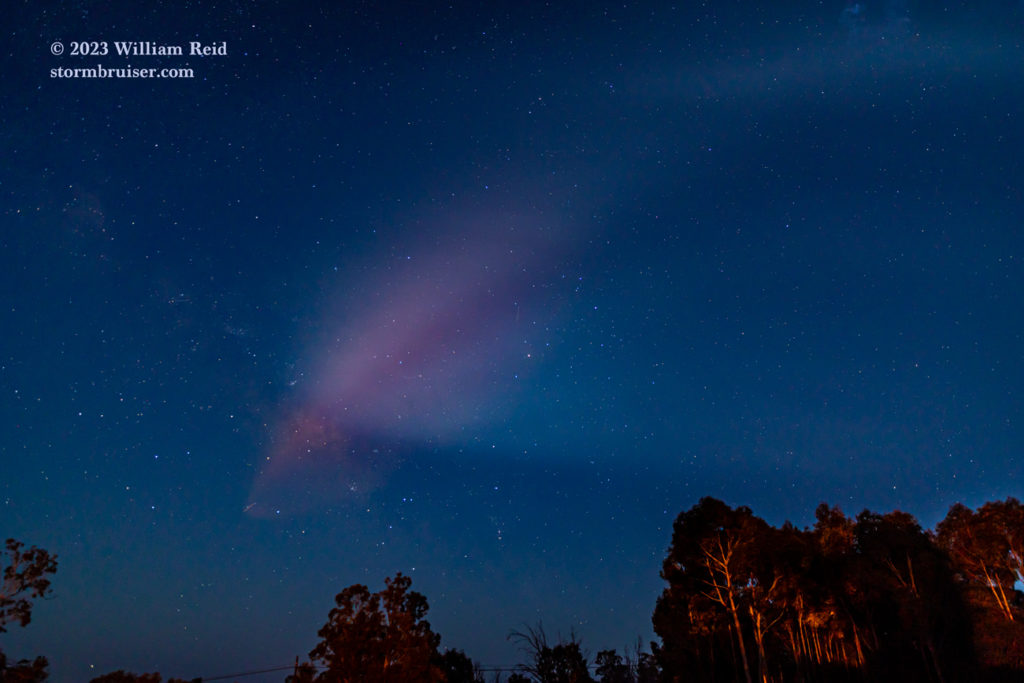
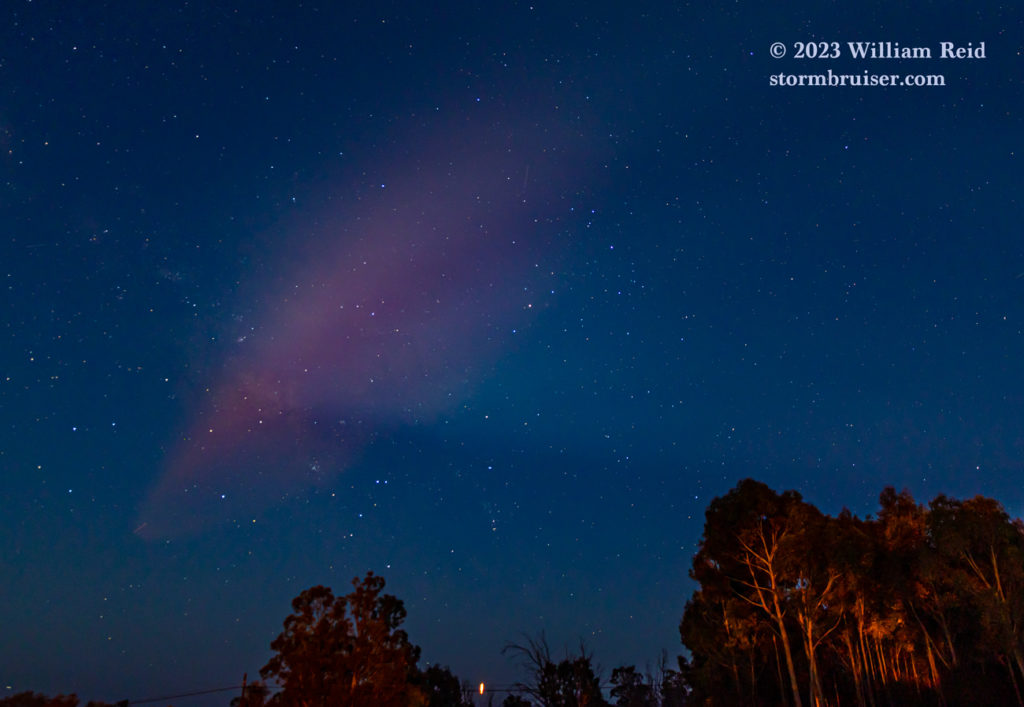

Leave a Reply
You must be logged in to post a comment.